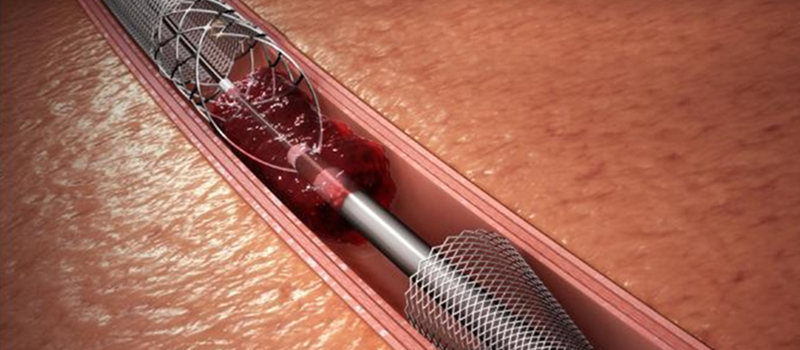Deep vein thrombosis (DVT) refers to blood clots in deep veins. When a deep vein clot breaks, it can travel up the bloodstream and lodge in the lungs, blocking blood flow (pulmonary embolism). DVT mostly occurs in the thighs or lower leg areas.
What is deep vein thrombosis (DVT)?
The word “thrombosis” means blood clotting inside blood vessels. Blood clots can form as part of an injury or disease process or for no apparent reason. Blood clots can block the flow of oxygen-rich blood to parts of our body, which can be dangerous if it happens in an artery or vein that carries vital substances to the brain or heart.
The term “deep vein thrombosis” means DVT occurs in deep veins, typically those in the lower leg or thigh, but they can happen elsewhere in the body. Deep veins run through muscles and have valves to help prevent blood flow backward. When these valves don’t work well, a blood clot can form.

In most cases, deep vein thrombosis is caused by something that prevents your blood from circulating or clotting normally, such as:
- An injury to a vein
- Immobility or being confined to bed for a long time, such as after surgery or an accident
- Cancer, especially if it has spread throughout your body (metastatic cancer)
- Pregnancy and the first six weeks after delivery
- Estrogen hormone therapy and birth control pills containing estrogen
- Varicose veins in your legs
- Smoking
Deep vein thrombosis can also be caused by certain medical conditions that affect how your blood clots.
Symptoms of Deep Vein Thrombosis (DVT)
The most common signs and symptoms of DVT include:
- Swelling (usually in one leg or foot)
- Pain or tenderness (usually in one leg)
- Skin that is warm to the touch
- Red or discolored skin on the leg

Pain may occur only when standing or walking. The swelling usually affects the entire leg, including the ankle and foot. Sometimes, just one part of your calf may swell up.
Diagnosing DVT
A doctor diagnoses DVT using imaging tests — such as an ultrasound or MRI scan — to see if a blood clot blocks a deep vein. These tests also show poor blood flow in a vein, which could mean a clot has occurred.
Treating Deep Vein Thrombosis (DVT)
Medication
The initial treatment for deep vein thrombosis is usually medications that dissolve clots (thrombolytics) unless you're at high risk of bleeding. The most commonly used thrombolytic is tissue plasminogen activator (tPA).
Surgery
If you have an especially large clot or are at high risk of complications from taking thrombolytics, your doctor may recommend surgery to remove the clot.
A surgeon can sometimes remove the clot through an incision in the leg, but usually, the procedure is done with a catheter. A long, thin tube is inserted into the vein in your groin or arm.
The tube has a balloon or suction device on one end that removes the clot. This is called a thrombectomy. Deep vein thrombosis can be life-threatening. A blood clot in the deep veins can break loose and travel through your bloodstream to your lungs and arteries supplying the heart.

Washington Vascular Specialists’ expert vascular surgeons offer the latest surgical treatments for DVT patients with the utmost attention to safety.
Our specialists are committed to providing state-of-the-art care while maintaining a high safety standard.
The team at Washington Vascular Specialists has successfully treated thousands of patients with blood clots and venous diseases over several decades.
Call 301-891-2500 to set an appointment!



